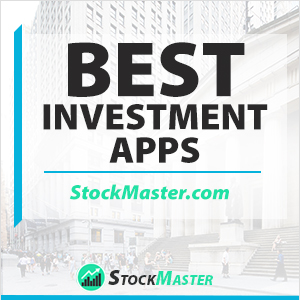 Picking the best investment app that will help you manage your portfolio can be challenging. Investment used to be a nightmarish process for people who are not experts in the matter. To begin with, you had to get in touch with an investor, who would listen to your plan and would advise you accordingly about where to put your money. Was your investment diction, right? Did you put your money in the right place? Well, you could know that only after a few months.
Picking the best investment app that will help you manage your portfolio can be challenging. Investment used to be a nightmarish process for people who are not experts in the matter. To begin with, you had to get in touch with an investor, who would listen to your plan and would advise you accordingly about where to put your money. Was your investment diction, right? Did you put your money in the right place? Well, you could know that only after a few months.
All of that has changed now with the arrival of investment apps. These smart apps just take a few taps and give you a free hand to trade your own stocks, create a tailored portfolio, check portfolio performance and manage your funds without having to ask for help, from another human, ever again.
Investment apps are easy to use tools and are offered by fintech startups as well as traditional brokerage companies. There a huge number of apps in the market already. You will have to pick one for yourself based on your requirements, preferences like where you prefer to invest your funds, ease of use, etc.
Let’s review the top-rated best investing applications and compare their features, so you can figure out which one is right for your investments.
Compare the Top Investing Apps in 2020
Here’s a list of the best investment apps that make investing easy and help you manage your portfolio.
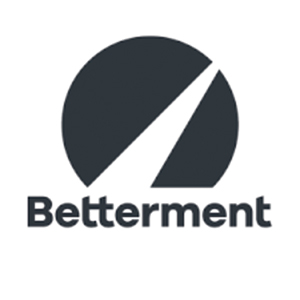 Betterment
Betterment
Betterment is a website that helps its customers to invest their funds in the likes of bond exchange-traded funds (ETFs) and stocks. This website uses asset allocation method to enable investors to select ETFs. The users of the website get to choose from professionally created portfolios and decide how much money they would like to spend on stocks and how much in the form of bonds.
Betterment was established in 2008 by Mr. Jon Stein. It is a first of its kind investment platform that is known as a robo-advisor. The goal behind the development of Betterment is to give top priority and focus to the customers.
App Features
Betterment is customer centric, therefore, it believes in doing everything for the customer while the customer reaps the benefits of investment. The platform needs an investor to create an account with them. At this time, it will ask for personal details like age, income, years till retirement, etc.
The basic information is followed by questions on financial goals. Betterment asks questions regarding, the purpose of saving money, risk appetite and preferred level of aggressiveness with the investments. Once it has all the information, Betterment uses an algorithm to develop a portfolio for you.
Going forward, Betterment takes all the decisions regarding purchasing and selling. It does not need any other input from the customer end. Customers who have $100,000 or more in their account get the opportunity to plan and execute their own portfolio with Betterment.
Fees and Pricing
Betterment provides two plans to its customers. Each plan has its own account minimum and pricing structure.
Digital Account:
This account does not require a minimum account balance. Its annual fees are 0.25% on a balance up to $2 million. After that its drops to 0.15%.
Betterment’s Premium account needs a minimum balance of $100,000. It costs an annual fee of 0.40% for balance up t0 $2 million and drops to 0.30 above that.
Pros of using Betterment
- Betterment platform is very easy to use.
- It has a retirement tool: RetireGuide. This tool comes in handy for saving money for old age.
- The platform is inexpensive as compared to the services it offers.
- Betterment provides access to certified financial planner through its Premium package.
Cons of using Betterment
- Betterment comes across a restrictive platform for individuals looking for full control.
- This platform lets you invest in ETFs only.
- Receiving guided advice on Betterment can become pricey.
- Customers can only view their external accounts using Betterment; cannot manage it.
Bottom Line
If you are a beginner and would like to try your hands at a robo-advisor, you should try Betterment. This platform was the first robo-advisor in the industry and is one of the best when it comes to features and services.
Betterment is not for you if you would like complete control on your portfolio. Betterment keeps the control with it and lets you just watch as it works with your funds based on the information provided by you. So, new investors should consider this amazing platform while seasoned investors who would like to pick individual stocks and manage every aspect of their platform, should look elsewhere.
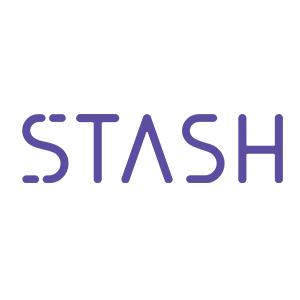 Stash
Stash
Stash is an investment platform that helps beginners invest money and build their portfolio. The Stash app was launched in 2015 and since then, it has garnered almost 2 million users. This company works with fractional shares to provide financial opportunity to everyone who wants to invest and save for their future. According to Stash, individuals who choose Stash, save an average of $1,432 per year.
Stash has created an easy to use application that simplifies the process of selecting investments. It is a great tool for beginners who do not have portfolio yet and are looking at the investment angle for the first time.
App Features
Stash is an easy to use platform that seamlessly combines banking, saving, investing and learning. It has been with the aim to help beginners learn financial nuances and earn financial freedom in the process. With stash, you can start investing with just $5 and reap the benefits of retirement accounts and flexible investing.
Stash comes with a bank account and a debit card that swells when you spend. You can also use a hands-off approach at building wealth by using the automatic saving and investment tools. Stash’s team of experts have churned out a huge content bank, that can guide customers with money matter while updating them about the latest in the industry.
Fees and Pricing
Stash offers three different plans to its customers.
Stash +
Stash+ has a monthly fee of $9 and offers investment tools, learning material, and benefits like earn stock back.
Growth
The growth account costs $3 a month and provides a personal investment account along with tax benefits after retirement, debit card access and tons of financial education that is totally free.
Beginner
Beginner account has a monthly fee of $1 and offers personal investment account with debit card access and their financial education courses.
Pros of using Stash
- Provides banking services with no hidden fees.
- It has low minimum account balance.
- Investors can trade in fractional shares.
- Provides value-based investment offering.
Cons of using Stash
- The fees for the accounts can get heavy on the pocket.
- There is no option for investment management.
- The ETF expense ratio is high.
Bottom Line
Stash is a great option for you if you are looking for slight handholding as you build your portfolio. It provides proper educational assistance that can teach you about portfolio management. Once you learn the basics, there’s isn’t much that stash can do. So, you can consider branching out after the initial stage.
 Acorns
Acorns
Acorn is one of the famous spare change apps that lets people automatically invest their spare change on purchases they make using a linked credit or debit card. It is an investment app that is currently valued at $860 and is one of the few applications that have got millennials interested in investing and saving.
Acorns was launched in August of 2014 by Walter and Jeff Crutteden with a vision to make investment accessible to everyone. Acorns has more than 5 million users now and it charges $1 to $3 based on the type of account you choose.
App Features
Acorns is an investing application that encourages its users to invest their spare change using a system called ‘round ups’. It keeps track of the user’s back account and every time there is an expenditure, it rounds up the number and automatically invest the change. For example, if you buy a coffee for $1.75. Acorn will round it up to $2 and invest the $0.25. The spare change investment idea is the key selling point of this application.
Acorn was launched to be mobile first service. It was initially available only as an application for android and iOS. Eventually, the company took the plunge and launched its website.
Fees and Pricing
Invest
The invest subscription comes with of $1 per month and offers investment of spare change, bonus investments and access to knowledge bank.
Invest + Later
This subscription costs $2 per month and provides investments options along with savings and tax advantages.
Invest + Later + Saving
With this subscription, customers can invest, save and also plan their spending. This subscription costs $3.
Pros of using Acorn
- It’s a great tool for college students and millennials who would want to start investing.
- Acorn waives off $1 fee for college students, so, it’s free for them.
- Acorn is good for investing and planning bigger amounts.
Cons of Using Acorn
- Investing with Acorns is quite expensive.
- You need to invest more amount to make the Acorn fee worth it.
Bottom Line
Acorns is a good tool for you if you are starting off in the industry segment and would like to learn the basics. This invest app is works wonderfully as long as you keep growing and adding bigger amounts to your account.
If your savings and investments are small, you might end up paying a huge percentage to Acorns, which is not advisable.
 M1 Finance
M1 Finance
M1 Finance is a smart money management application that helps its customers invest, borrow and spend, using one single platform. It is a top-notch robo-advisory that helps individuals optimize their money according to their preference. M1 Finance has a low fee structure and it does not charge any commissions.
M1 Finance is a Chicago based financial services that opened its doors in 2015. It is helmed by its founder Brian Barnes. The company is focused on helping millennials learn the importance of investment and start growing their money from the early stages. According to the founder, the financial services offered by companies should be convenient, automated and inexpensive in order to attract the latest generation and that is what he has tried to achieve with M1 Finance.
App Features
M1 Finance’s app has an automated investing features and it can be highly customized. Customers can use individual stocks for investment or can create a portfolio using low cost ETFs or they can create a working combination of both.
This application provides the customers with a decent control on their portfolio and allows them to invest in fractional shares. The company has created more than 80 expert portfolios that the customers can use instead of creating one.
It is also very simple to create an account with M1 Finance. You just need you email id and a password and you are in. This platform does not conduct a risk assessment. The app is very easy to use on the phone with all the features similar to the website. M1 is supported by a well-built section of FAQs.
Fees and Pricing
M1 Finance does not charge a portfolio management fee. There is no trading fee or fees related to withdrawals from the connected bank account. This platform charges a regulatory fee and additional fees. When you sign up for this account, it’s only $100 for the first year. After that, it costs $125 per year.
Pros of Using M1 Finance
- M1 allows trading in fractional shares.
- It does not charge any trading or asset fee.
- It allows for flexible portfolio building along with some fixed expert portfolios.
- Complete transparency about how the company generated revenue.
Cons of Using M1 Finance
M1 Finance charges a fee when an account has under $20 in it and doesn’t show any trading activity for at least 90 days.
- This company does not have any financial advisors.
- M1 Finance doesn’t have a chat capability.
- M1 Finance platform offers minimal help with setting financial goals.
Bottom Line
M1 Finance offers a high level of customization, so it makes for a great choice for experienced investors who would like to have control on their portfolio. M1 provides a cheaper and easier way of investing with a great number of customizations.
If you are new to investing and would like some handholding, M1 Finance may be not for you. With this application, you won’t be helped through goal setting and you will have to calculate your own risk tolerance and understand the nuances markets, stocks and ETFs.
 Personal Capital
Personal Capital
Personal Capital is an asset management service app that also offers advice from experienced financial advisors. This company provides the customer with several tools and automates various elements of the portfolio management process. Personal Capital offers two planning tools: one is a free tool and another is a total asset management service. The management service requires a $100,000 minimum account size.
Personal Capital was started in 2009 by founders Rob Foregger, Bill Harris, Paul Bergholm and Louie Gasparini. This company has helped more than 2 million people since then and has assets worth a whopping $10 billion under management.
App Features
Personal Capital is very easy to use. When you create an account, it asks for a number of personal details like email id, phone number, date of birth and more. You are required to do a call with an advisor, and this is a compulsory step no matter what your intentions are for using the platform.
This platform lets you access 12 different portfolio allocations and then there are unlimited number of strategic variations to consider. As a customer, you won’t be able to see your recommendations until you have talked to the financial advisor. Personal Capital provides pretty decent goal setting advice, detailed account services and an astounding portfolio management.
Fees and Pricing
The fees charged by Personal Finance depends on the amount of money you are investing/managing with the company. There are three major slots:
$100,000 – $200,000 in assets – This is the first tier and the customers with an amount between the two mentioned numbers receive priority support service.
$200,000 – $1,000,000 in assets – This is the middle tier. It includes access to two dedicated financial advisors. You also get a flexible portfolio that can include stocks and tax-loss harvesting.
$1,000,000 in assets – This is the highest tier and is known as the Private Client. This contains of individual bonds along with private equity investments.
Pros of using Personal Capital
- Personal Capital has efficient tax optimization strategies.
- It offers a decent retirement planning tool.
- Every customer is matched with a financial planner.
Cons of using Personal Capital
- This platform is not for the beginners who want to start with small amounts.
- The fees charged by this platform is one of the highest in the industry.
- The mobile app of Personal Capital does not have a number of features offered on the website.
Bottom Line
If you are a high-net-worth client, Personal Capital can provide you a robust methodology and service. The fees charged by this platform is high for all the tiers and the minimum asset requirement is pretty steep too.
However, if you have a decent amount in savings, Personal Capital can be a great tool for investments and wealth management. It is also a wonderful choice for parking emergency funds.
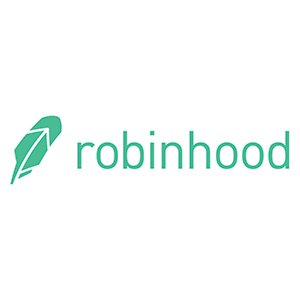 Robinhood
Robinhood
Robinhood is a financial services company based in Menlo Park California. It is an entirely online company that has no storefront offices. Robinhood was founded in 2013 and since then it has also ventured into cryptocurrency. The company charges zero commission fees which is a great deal for the amount of services and tools it offers.
It is a free-trading app that was the only one to charge no commissions till the second half of 2019. This platform is a good choice for investors who would like to dabble in traditional trading and high yield saving while also trying their hands on the latest trend: cryptocurrency.
App Features
Robinhood is an extremely easy to use platform. The processes of sign up and account funding are quick and breezy and works the same way on the website as well as the application. As already discussed, one of the key features of Robinhood is its commitment to provide 100% commission free services. This applies to stocks, ETFs and cryptocurrency.
Robinhood app comes in like good news to those interested in dealing in fractional shares. This feature makes it easy to build a diversified portfolio without having to shell out huge amount of money. Furthermore, this platform offers a cash management account that pays an interest of 1.80%. This new feature started in the end of December 19.
Fees and Pricing
Robinhood does not charge a commission for investment. There is no fee for opening an account and the same applies to account management. Robinhood charges a fee for its margin-lending service which is known as Robinhood Gold. This account comes with a monthly fee of $5 for premium features offered by the platform.
Pros of Using Robinhood
- Robinhood has no account minimum.
- It offers a streamlined interface.
- Robinhood is one of the few platforms that facilitates trading in stocks as well as cryptocurrency.
Cons of Using Robinhood
- Robinhood provides limited customer support.
- This application does not offer bonds or mutual funds.
- There are no retirement accounts for the customers.
Bottom Line
Robinhood is a great choice for you if you are looking for a platform that gives you the flexibility of trading between the stocks and cryptocurrency. It is also a good choice for those who would like to take advantage of commission-free trading and learn the basics and build a portfolio.
Robinhood won’t be good for you if you are looking to invest in mutual funds and want a solid customer support to help you navigate your way around the platform as well as the investment market.
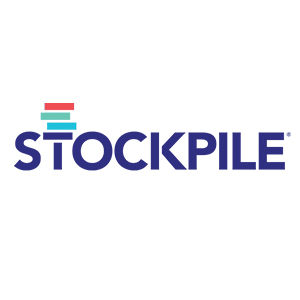 Stockpile
Stockpile
Stockpile is app-based brokerage service that has been designed with the aim to make the younger generations comfortable with the idea of stock market and its working. It provides a streamlined interface that simplifies the process of buying and selling ETFs and stocks along with the chance to invest in fractional shares. Stockpile also offers a unique feature of gift card options: you can gift shares as a gift for birthdays and graduations.
Stockpile was born in 2010 from a simple though of giving kids something more than toys on Christmas. The founder, Avi Lele also has the intention of making stocks of big brands like Apple accessible to everyone and this why he worked out the solution in the form of fractional shares.
App Features
Stockpile lets customers buy and sell shares and create a diverse portfolio by investing small amounts in multiple stocks. Customers can also buy normal stocks and watch their investment grow with time using a simple dashboard.
As already discussed, the feature that makes Stockpile stand out is its facility of purchasing gift card in the form of fractional shares and ETFs. Since the Stockpile platform is very simple it creates a decent trading experience. The platform has been kept intentionally simple so that the younger generation can learn the nuances of investing with ease.
Stockpile also rates good when it comes to usability. This is an app-based brokerage that is user friendly and works well both on the android as well as iOS.
Fees and Pricing
All trades on Stockpile cost $0.99. Gift cards for stock are priced at $2.99 for the first stock and after that every stock can be purchased at $0.99. if an account is funded using a debit card, there is additional transaction fee of 1.5%. Similarly, if you buy a gift card using credit or debit card, there is a transaction fee of 3% of the card’s value.
Pros of using Stockpile
- Stockpile has the unique gift card option.
- It charges low commission on trading.
- Has a simple and streamlined interface.
- Great place to teach teenagers and kids about investing through custodial accounts.
Cons of Using Stockpile
- Stockpile has a minimal research and analysis tools.
- There are limited securities available for the customers.
- There is no order routing option.
Bottom Line
Stockpile is a unique brokerage app that is ideal for inexperienced investors who want to learn the basics of the stock market. It isn’t meant for experienced traders or individuals looking for a variety of securities.
If you would like to introduce your children or younger member of family to investment and savings in their early years, there cannot be a better tool than Stockpile.
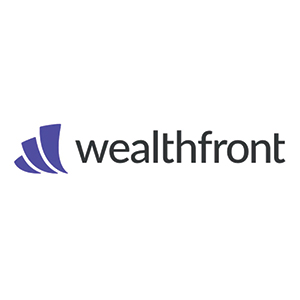 Wealthfront
Wealthfront
Wealthfront is one of the best robo-advisor applications that offers excellent goal setting and investment planning tools. Wealthfront was conceived to fill in the gap crated by investment apps that need a huge amount in minimums and are simply not feasible for beginners like students.
Andy Rachleff the co-founder of Wealthfront saw the need for an application that provided sophisticated financial advice at an affordable price and took the opportunity to create Wealthfront based on a software that makes investing easier.
Dan Caroll, the other co-founder brought with him the knowledge that most customers were not getting the worth of their money with financial advisors. He identified the need for a good financial advice that does not waiver based on the amount being invested. Together Dan and Andy then created Wealthfront.
App Features
Wealthfront is a well-rounded tool that is much loves by both the experts as well as the investors. The first step: account setup of Wealthfront is fairly easy to do. It asks for all the information it needs and it may turn out to be a lot of questions based on how many assets and financial institutions you will be connecting to your account.
Furthermore, the goal setting and goal tracking tools are the stars of this platform. It also provides excellent account services like portfolio line of credit, cash management account at a rate of interest of 2.7%.
Wealthfront follows the MPT (Modern Portfolio Theory) to create asset allocations. There are 11 asset classes on this platform and all of them use low-cost ETFs.
Fees and Pricing
Wealthfront has an account minimum of $500. Further, it charges a fee of $0.25% on most accounts. There is no fee for cash balances. This platform does not have any trading commission and does not levy any fees on withdrawals, transfers or minimums. The ETFs come with an annual management fee of 0.07%-0.16%.
Pros of Using Wealthfront
- Wealthfront offers astounding financial planning.
- It provides in-depth goal setting assistance.
- Wealthfront has the much-needed tax loss harvesting.
Cons of Using Wealthfront
- There’s no online chat option for customers.
- Portfolios under $100,000 can be customized only for risk settings.
- Mutual funds may get costlier for larger accounts.
Bottom Line
Wealthfront is an all-star robo-advisor. It is a great tool for everyone who is looking to invest and grow their money in a consistent way through an all-in-one financial solution. If you want to create a portfolio that grows with regular deposits and would like to enjoy the benefits of spectacular investment tools, Wealthfront is the platform for you. If you are looking for customization though, Wealthfront may not be right for you.
 Wealthsimple
Wealthsimple
Wealthsimple is a Canada based online investment management company. This company is focused on making investment simpler and attractive for millennials and hence it has created some easy to use and innovative products.
Wealthsimple was founded by Michael Katchen in the year 2014 and since then this Toronto based company has acquired C$4.3 billion in assets under management. This platform offers a refreshing balance between technology and human help. Together they guide individuals to build a portfolio while enjoying high interest savings and commission-free stock trading.
Wealthsimple is one of its kind financial tool with its halal-compliant and socially responsible portfolios. It provides various levels of advisor access and has an investment plan for everyone.
App Features
Wealthsimple is a one of its kind investment platforms that makes Shariah compliant portfolio. So, companies that profit from alcohol, gambling, tobacco, etc. are not permitted on the platform. Furthermore, Wealthsimple does not have an account minimum for its basic offerings and for the other options it has been kept to minimum.
Some of the other top features of Wealthsimple are investment in fractional shares, customized service for high-balance account holders, access to a team of financial planners and tax loss investing. There are also a few excellent service extras like free portfolio review, smart savings account, VIP priority pass membership and a round up feature that put your spare change to work.
Fees and Pricing
Wealthsimple offers three types of accounts:
Basic – This account comes with a management fee of 0.5% and offers facilities like personalized portfolio, auto-rebalancing and expert financial advice.
Black Deposit
This account needs a balance of $100k and more. It has a management fee of 0.4% and offers perks like tax-loss harvesting, financial planning session and VIP airline lounge access.
Generation
Generation account needs a deposit of $500 and more. It comes with all the perks and features of Black plus extras like asset location, dedicated team of advisors and individualized portfolios.
Pros of Using Wealthsimple
- Wealthsimple gives access to human advisors along with robo-advisors.
- You get a free portfolio analysis.
- There is no account minimum on this platform.
- Wealthsimple has socially responsible investment options.
Cons of Using Wealthsimple
- There is a steep account management fee.
- There are limited personal finance tools.
Bottom Line
Wealthsimple is a great choice for those who are looking for a halal investment option that fits Islamic laws. This is a socially responsible tool that lets its investors save and build money without a worry. It is also a good option for individuals looking for tax-loss harvesting, access to financial planners and an individualized portfolio for large accounts. Wealthsimple won’t be a good choice for you if you are looking for low fee structure and personal finance tools.
Common Investing App Questions
Here are the most common investing app questions that investors typically ask about the most popular apps.
How do investment apps work?
The main aim of an investment app is to help you invest your money at the right places and build a strong portfolio with time. Every investment app is different and how they help you grow your money is different. Some applications like Wealthsimple and Betterment help you in investing in ETFs and stocks. Then there are some applications like Acorn that work on your spare change and help you invest by rounding up your expenses related to linked bank account.
Most of the investment apps provide robo-advice while there are some that give you access to expert financial advisors. While every investment app is different and comes with a different service fee, the aim is one, to help a customer invest their money in various securities and build their portfolio.
What are the Pros and Cons of using an Investment App?
Pros of Using an Investment App
- You can use an investment app to learn about investing and how you can manage your money better.
- An investment app provides an easy platform for investing.
- Some investment apps let you start investing with as less of $5. So, you can start investing early on in life and build your funds from day 1.
- Investment apps can keep you updated with the latest information related to the economy.
- A number of investment apps charge a very low fees in the form of commissions making them an inexpensive option to dabble in stocks and mutual funds.
Cons of Using Investment Apps
- Most investment apps do not provide non-taxable accounts. So, you may not be able to use tax-advantage account like IRA.
- Investment apps tend to provide a false sense of confidence with over-the-top marketing strategies. You may end up with much less than you expected because you never understood the real condition of the market.
- The risk assessment method used investment apps is not trustworthy, hence you may end up with bad investment choices.
- Investing using credit cards is a really bad idea but unfortunately that’s is how some applications work. Avoid apps that work on the credit card system.
- Don’t I need a financial advisor?
Yes, you need a financial advisor if you are looking for help in money matters. If you are person with investable assets and would like to plan funds for your future, you are the right candidate for some advice from an expert. A financial advisor is an individual who can help you manage and grow your money using a number of ways. He/she can help you with investing, retirement planning, financial planning and a lot more.
There are two types of financial advisors: asset managers and wealth managers. If you are looking for help with investing in bonds, stocks, and other products, an asset manager can help you. A wealth manager, on the other hand work for the overall health of your finances and will protect it over the years.
Are investment apps secure?
Investment applications are only as safe as you would make them. These are typical applications that deal with your personal details and money. So, you have to be very meticulous in identifying the safest application for you. Of course, all the applications out there, claim to be safe but it comes down to you to analyze and pick one.
Once you have checked the safety features and created an account, it again comes down to you to follow safe practices to keep your information and money safe. You have to be conscious about your own activities, like you should not share your credentials with anyone, and you should always be suspicious about products that seem like ‘too good to be true’.
How much money do I need to invest?
Investment apps have different account balance minimums. Some of the start from as low as $5 while some will need you to invest a minimum of a few hundred dollars. So, there is no saying how much money you need to invest. You can invest as much as you want but you will have to choose your application accordingly. There are only a few apps that deal with lower amounts. These are ideal for beginners who want to learn the rules of investing. The higher amount applications usually provide better hand-holding and come with a number of perks.
Why should I invest?
Investing is one of the sure shot methods of growing money. Most of the investment vehicles like stocks, bonds, deposits, certificates, etc. offer returns on the invested amount over a certain period of time. Here are some benefits of investing:
- Investing money will help you build wealth.
- Proper investment and planning can give you a retirement fund.
- You can invest and build to meet important financial goals in life.
- Investment can help you save taxes.
- What can I trade on an investment app?
You can trade on stocks, mutual funds and ETFs using an investment app. Investment application provide trading in one or all of these vehicles.
Investment apps are like blessing for people who want to put in minimum efforts to enjoy the benefits of investing. These apps sit cozily in your smartphone and take care of your money while you work hard to build your career.
Our Recommendation
Every application has its own pros and cons and serves different financial purposes. So, while you set out to find your investment genie, make sure to do your homework first. List down what you want your investment application to do, like save for retirement, help you save tax, build a diverse portfolio and play very safe on the risk scale.
You will be able to choose a better app by know what you want, or you might simply end up losing a lot of money that charges a fee bigger than what you invest every month. Investment is a smart thing to do to build your wealth, but you have to be smarter than the application. Rely on it but believe in your own judgement.
